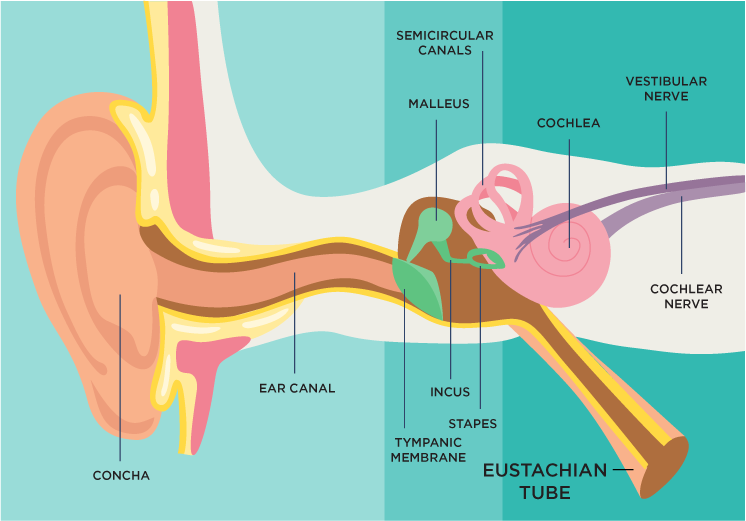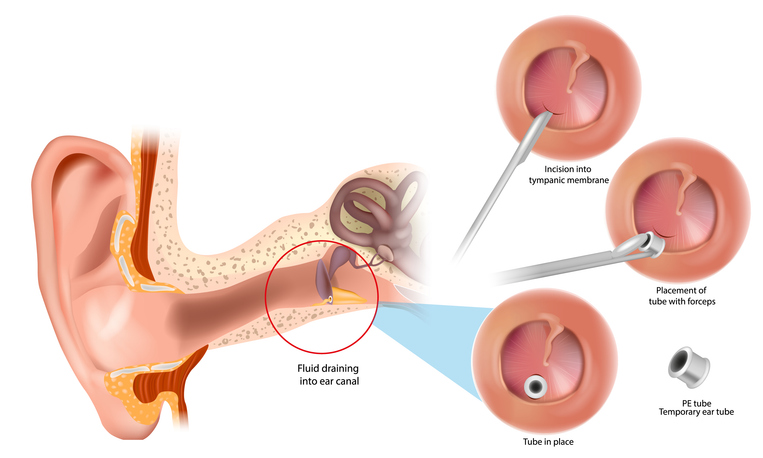If your child suffers from chronic ear infections, you know how painful and frustrating it can be. Sleepless nights, missed school days, and countless trips to the pediatrician—it’s a cycle that feels never-ending. But there’s hope. Ear tubes, tiny cylinders placed in the eardrums, can provide much-needed relief.
You’ve probably heard about ear tubes, but maybe you’re unsure what they are or how they work. Read on to find out if ear tubes could just be what the doctor ordered.
What are ear tubes?
Ear tubes, also known as tympanostomy tubes, are tiny little lifesavers placed through the eardrum to let air into the middle ear. They’re great for draining fluid and balancing pressure, helping to ward off ear infections and boost hearing. For anyone dealing with otitis media, the medical term for middle ear infection, these tubes can be a game-changer. If you’ve ever had to comfort a child in tears because of an ear infection, you’ll understand just how crucial a solution like this can be.
Eustachian tubes and ear health
To understand why ear tubes are sometimes necessary, it’s helpful to understand eustachian tubes. These tiny passages connect the middle ear to the back of the throat and play a crucial role in keeping our ears healthy.
When eustachian tubes function correctly, they balance pressure and help clear fluid from the middle ear. But sometimes, they get blocked or too narrow, causing fluid and pressure to build up. This happens more often in kids as their eustachian tubes are shorter and narrower. That’s why kids frequently end up with runny noses and ear infections. If not taken care of, chronic fluid buildup can lead to hearing loss and speech delays. Thankfully, ear tubes can help. They provide a way for fluid to drain and pressure to balance out, helping keep those little ears healthy.

The procedure
The thought of having surgery can be daunting, but getting ear tubes is a quick and pretty straightforward process. It’s typically done under general anesthesia for young children, but older kids might be able to have it done right in the office using local anesthesia.
During the procedure, a tiny cut is made in the eardrum to drain any fluid. This step, known as a myringotomy, is the most common surgery for kids. It can be performed as a standalone treatment, but more often, it’s paired with tympanostomy, which is when the ear tubes are placed into the eardrum. The whole process usually takes less than 15 minutes, and recovery time is fast. Most patients can go home the same day.

Signs and symptoms that ear tubes might be necessary
So, how do you know if your child (or you) might need ear tubes? Some common signs and symptoms that may warrant a consultation include:
- Frequent ear infections: If your child has had at least three ear infections within six months or four infections with persistent fluid, tubes may be recommended.
- Chronic fluid buildup: Even without infections, persistent fluid in the middle ear can cause hearing loss and other issues.
- Speech or learning delays: If your child is showing signs of speech or learning difficulties due to hearing loss from chronic ear problems, tubes may help.
Benefits of ear tubes
While the main aim of ear tube surgery is to stop ear infections, there are other potential benefits to consider:
- Improved hearing: By draining fluid and equalizing pressure, ear tubes can restore hearing loss caused by chronic ear problems.
- Better balance: Eustachian tube dysfunction can sometimes lead to balance problems or dizziness. Ear tubes may help alleviate these symptoms.
- Fewer antibiotics: With ear tubes in place, your child may need fewer rounds of antibiotics for ear infections.
Every child and every case of chronic ear infections is unique. The ENT specialists at Oakdale ENT Clinic can help determine if ear tubes are the right choice for you or your child. For many, they can provide much-needed relief from chronic ear issues.
Recovery process and care
After the procedure, we will provide detailed instructions for care and follow-up, which may include the following:
- Ear drops: You may be prescribed antibiotic ear drops to prevent infection and help the tubes stay clear.
- Pain management: Over-the-counter pain relievers like acetaminophen or ibuprofen can help with any discomfort after the surgery.
- Water precautions: While some doctors say it’s okay to get water in the ears with tubes, Oakdale ENT physicians typically recommend earplugs or cotton balls coated in petroleum jelly to keep water out during bathing or swimming.
- Follow-up appointments: We will want to see you or your child regularly to check on the tubes and make sure everything is healing properly.
In most cases, relief from pain and hearing loss is immediate after the tubes are placed. And the best part? No more chronic ear infections.
Common questions
As with any medical procedure, having questions and concerns about ear tubes is perfectly normal. Here are some common questions we hear from parents:
How long do ear tubes stay in?
- Most tubes fall out on their own within 6-18 months as the eardrum heals.
What are the risks of ear tube surgery?
- While complications are rare, they can include infection, scarring of the eardrum, or the tube falling out too early. We will discuss these risks with you in more detail during your consultation.
Will my child need another set of tubes?
- Some children do require a second set of tubes if ear problems persist. In these cases, we may recommend removing the adenoid glands to help prevent future infections. Remember, every child’s situation is unique, and we are here to help you weigh the potential benefits and risks of ear tube surgery for your child.
Next steps
Putting in ear tubes might just turn things around for your little one if they’re often sick with ear infections. We’ve seen countless children benefit from long-term relief, reduced antibiotic use, and even improved hearing and speech development. If this sounds like a solution you’d like to explore, we’re here and will walk you through all your questions and concerns.
Get in touch with us to learn more, and we’ll be happy to guide you through the entire process. Call Oakdale ENT at 763-233-5755 or schedule an appointment online.
